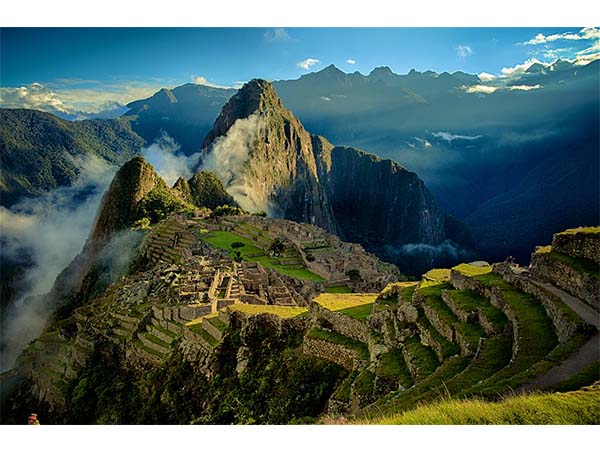Peru - World Class Dentistry

Country Profile
Peru, officially the Republic of Peru, is an extremely bio-diverse country with habitats ranging from the arid plains of the Pacific coastal region in the west to the peaks of the Andes mountains vertically extending from the north to the southeast of the country to the tropical Amazon Basin rainforest in the east with the Amazon river.
Peruvian territory was home to ancient cultures spanning from the Norte Chico civilization in Caral, one of the oldest in the world, to the Inca Empire, the largest state in Pre-Columbian America. The Spanish Empire conquered the region in the 16th century and established a Viceroyalty with its capital in Lima, which included most of its South American colonies.
The Peruvian population, estimated at 31.2 million in 2015, is multi-ethnic, including Amerindians, Europeans, Africans and Asians. The main spoken language is Spanish, although a significant number of Peruvians speak Quechua or other native languages. This mixture of cultural traditions has resulted in a wide diversity of expressions in fields such as art, cuisine, literature, and music.
Telecommunications
Peru’s telecommunications market has grown significantly over recent years. Its economic development has attracted investments from local and international companies in all industries for geographic expansion and automation. However, subscriptions are largely concentrated in urban zones, and the indigenous populations live in areas such as the Andean mountains and Amazon jungle which are inaccessible to phone lines and Internet connections.
The fastest developing telecom markets include mobile telephony, fixed and mobile broadband, and pay TV. Peruvian network operators currently face a challenge to expand 3G network coverage and improve the quality of services. This will create opportunities for new advanced applications and services as well as increased revenue. Despite problems with inequality and population distribution with many isolated communities, new technologies are being adopted, increasing in turn the money spent on non-essential mobile and telecom services.
English Literacy
In 2014, President Ollanta Humala’s administration – which had already passed the University Act and created the National Superintendence of University Education (SUNAU or Superintendencia Nacional de Educacion Superior Universitaria) to oversee the university sector – set the goal of raising the country’s proficiency in English. In the past, the three official languages (Spanish, Quechua, and Aymara) were the focus, but the government has now established a goal to achieve national bilingualism by 2021. “This means implementing a state policy in education so that all our children can manage a foreign language. We will prioritize English,” said the President in a 2014 speech.
In order to create a bilingual nation more resources have been marshaled for both student learning and teacher training. Most Peruvians who attain English fluency do so by attending language institutes. The major barriers for Peruvians wishing to learn English are cost and time. Both relate to income level.
School System
Initial education is offered in crèches (under 3 years of age), nursery schools (from 3 to 5 years) and through non-school programs aimed at poor children in rural and marginal urban areas. According to the Constitution of 1993, one year of initial education is mandatory for the population of 5 years of age.
The next level is primary education, which has a duration of 6 years. It should be said that primary education used to last for only 5 years.
To pass on from primary education, students need an average mark of 11 (20-point evaluation system) and to have passed at least language or mathematics.
Secondary education is organized in two cycles: the first applies to all pupils, lasts two years and is mandatory. This, together with primary education, constitute the obligatory block of education. The second cycle, lasting three years, is diversified, with arts, science and technical options. It is provided in two modes: for adolescents (12-16 year age group) and adults. According to the 1993 Constitution, secondary education is also mandatory.
Higher education is provided in higher schools and institutes, higher postgraduate centres and universities. The institutes offer training programs for teachers and a variety of technical training options in courses lasting not less than four or more than ten academic semesters. Institutes and higher schools award professional, technical and expert diplomas and also those for second and subsequent professional specialties. The universities award bachelor’s and master’s degrees and doctorates, as well as professional certificates and degrees, including those for second and subsequent professional specialties.
Higher Education
Higher education in Peru consists of technological colleges, both public and private. They offer courses lasting three years (approximately 3,000 hours of study), graduating with a title as Technical Professionals. Some courses may be four years in length (approximately 4,000 hours of study), and a student would graduate with the title of Professional.
Medical Education
Admission to higher education is based on completion of secondary school and having the requisite qualification, the Certificado Oficial de Estudios de Educación Secundaria. Admission is competitive and very selective, especially to prestigious public and not-for profit institutions, so most universities also require a separate set of entrance examinations.
Students that choose particular universities that they wish to attend must sit admission examinations set by those universities. Some universities have two tiers of examinations, a general and a major-specific examination. Entrance exams are usually held once or twice a year during the holidays. Only universities (universidades) can confer the academic degrees of Bachiller, Maestro and Doctor.
The Dentistry Profession
With ever increasing costs for dental care and treatment in Northern America and Europe, functional and healthy teeth not even mentioning the famous white smile remain for more and more patients beyond their reach. Others refuse to pay astronomical prices for standard treatments and bad service. Therefore many are looking for more affordable, but nevertheless top quality dental therapy abroad.
Peru became in the last few years one of the top destinations for dental tourists; and with good reason. In Peru it's easy to combine a reasonably priced, first class, necessary or desired dental treatment with the pleasure of traveling this amazing country.
Especially in Lima there are numerous first class dental clinics offering top notch dental treatment in any imaginable area including preventive, restorative and cosmetic dentistry, orthodontics and implantology for reasonable prices. Dentists are often specialists in their field and have studied and worked abroad or are trained according to international standards. For them the comfort of their patients and overall service is of the utmost importance. Clinics catering for dental tourists are equipped with state-of-the-art technology and use the latest techniques and materials.
Getting There for Dental Care
Jorge Chavez International Airport (LIM), in Lima is Peru's main national and international gateway, with an estimate of 98% of all international flights into Peru landing at this airport.
With distances in Peru being so vast, many Peruvians and other travelers are increasingly flying to their destinations, as all Peruvian cities are within a two-hour flight of Lima. Most Peruvians, however, still get around the country by bus, a cheap way to travel with routes to almost everywhere. In a few cases, it’s possible to arrive by train – an interesting and sought-after experience itself – though these trips are considerably slower than the equivalent bus journeys.
Visitor Highlights
Peru is one of the most famous and popular countries in South America. Most people flock here to hike the Inca Trail and see Machu Picchu. Everything else takes a back seat. Lima and Cusco also get some minor attention but there is far more in this country that just these three major sites. Come explore the jungles, see the Amazon, head to Lake Titicaca, or to the beaches. Learn about local culture, try the coca tea. In short, stay longer and see lots. There’s more to Peru than Machu Picchu.

